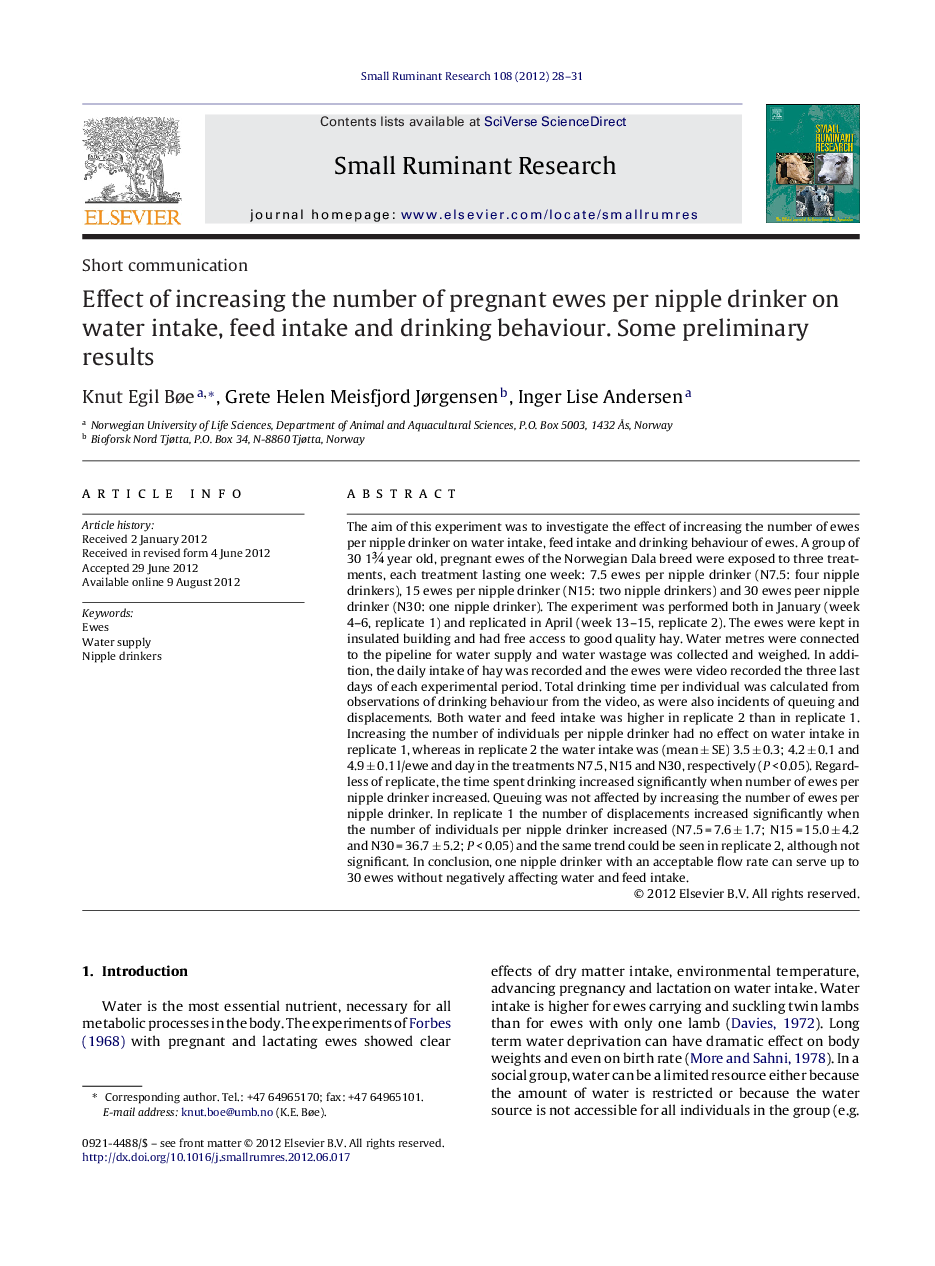| کد مقاله | کد نشریه | سال انتشار | مقاله انگلیسی | نسخه تمام متن |
|---|---|---|---|---|
| 5796229 | 1554384 | 2012 | 4 صفحه PDF | دانلود رایگان |

The aim of this experiment was to investigate the effect of increasing the number of ewes per nipple drinker on water intake, feed intake and drinking behaviour of ewes. A group of 30 1¾ year old, pregnant ewes of the Norwegian Dala breed were exposed to three treatments, each treatment lasting one week: 7.5 ewes per nipple drinker (N7.5: four nipple drinkers), 15 ewes per nipple drinker (N15: two nipple drinkers) and 30 ewes peer nipple drinker (N30: one nipple drinker). The experiment was performed both in January (week 4-6, replicate 1) and replicated in April (week 13-15, replicate 2). The ewes were kept in insulated building and had free access to good quality hay. Water metres were connected to the pipeline for water supply and water wastage was collected and weighed. In addition, the daily intake of hay was recorded and the ewes were video recorded the three last days of each experimental period. Total drinking time per individual was calculated from observations of drinking behaviour from the video, as were also incidents of queuing and displacements. Both water and feed intake was higher in replicate 2 than in replicate 1. Increasing the number of individuals per nipple drinker had no effect on water intake in replicate 1, whereas in replicate 2 the water intake was (mean ± SE) 3.5 ± 0.3; 4.2 ± 0.1 and 4.9 ± 0.1 l/ewe and day in the treatments N7.5, N15 and N30, respectively (P < 0.05). Regardless of replicate, the time spent drinking increased significantly when number of ewes per nipple drinker increased. Queuing was not affected by increasing the number of ewes per nipple drinker. In replicate 1 the number of displacements increased significantly when the number of individuals per nipple drinker increased (N7.5 = 7.6 ± 1.7; N15 = 15.0 ± 4.2 and N30 = 36.7 ± 5.2; P < 0.05) and the same trend could be seen in replicate 2, although not significant. In conclusion, one nipple drinker with an acceptable flow rate can serve up to 30 ewes without negatively affecting water and feed intake.
Journal: Small Ruminant Research - Volume 108, Issues 1â3, November 2012, Pages 28-31